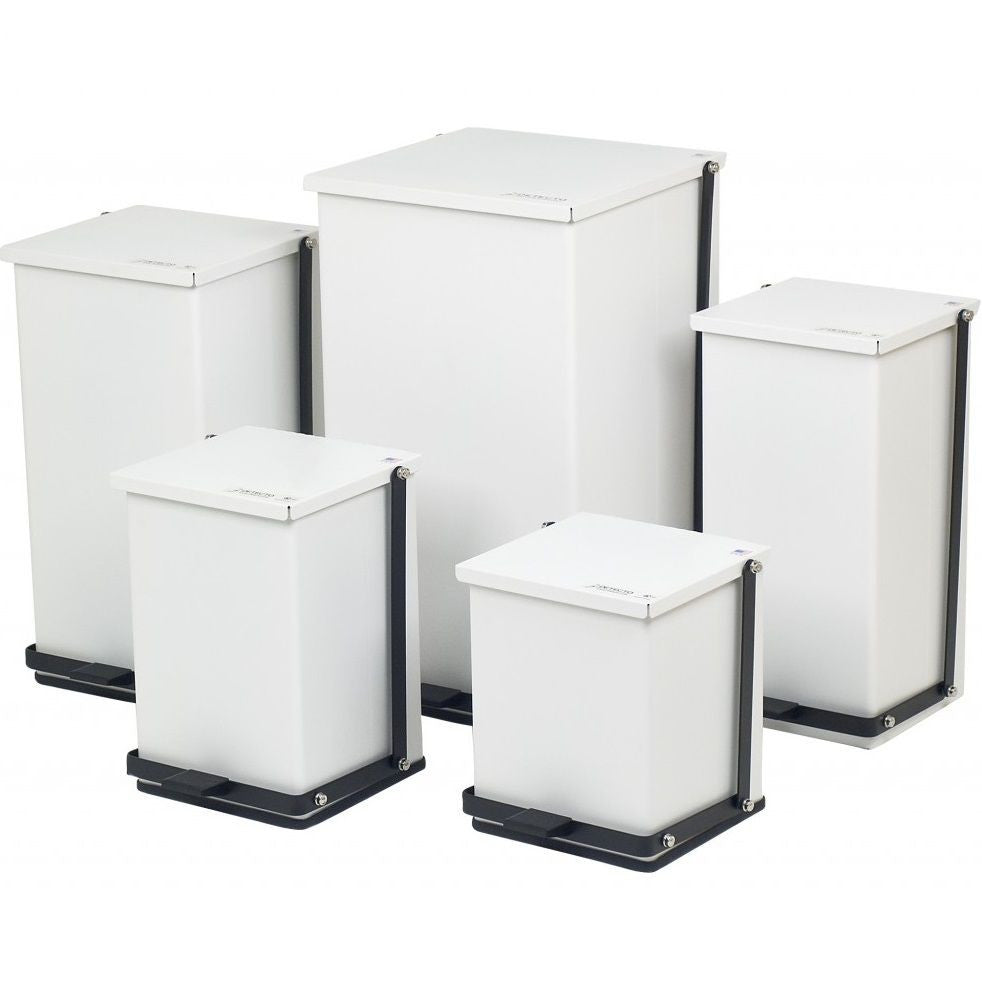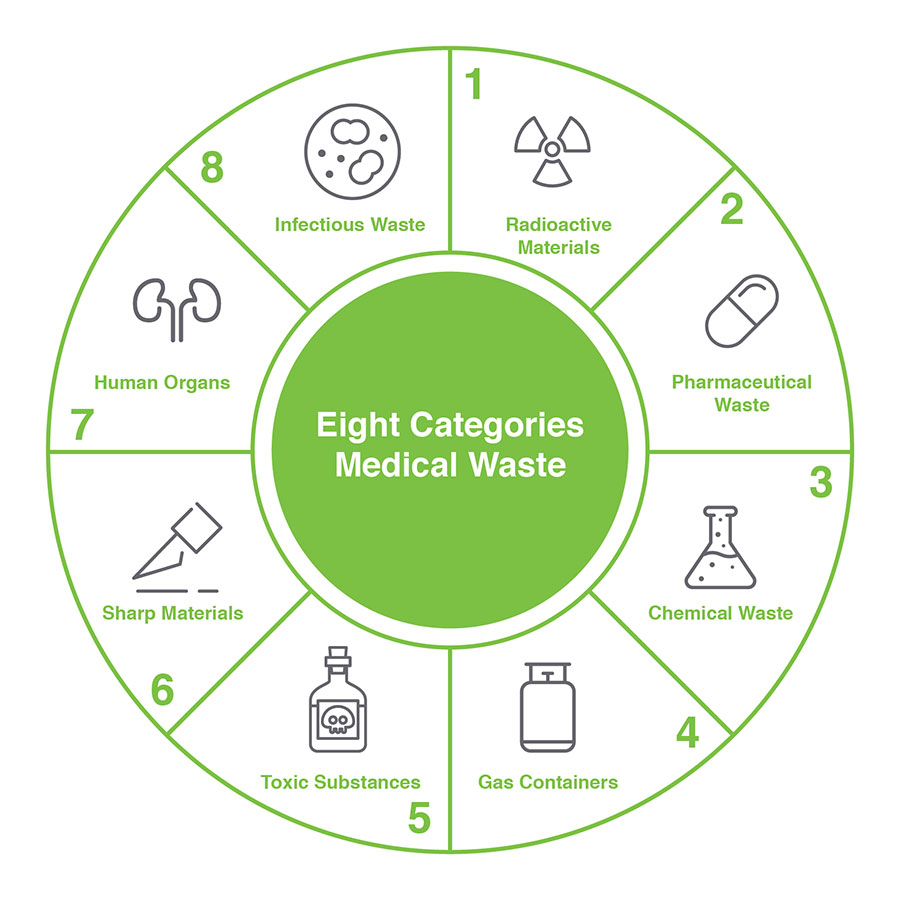Remain Ahead of Regulations: Professional Suggestions on Medical Garbage Disposal
In a globe where the medical care market is regularly evolving, it is necessary for medical facilities to remain ahead of policies when it comes to the correct disposal of medical waste. From comprehending the different groups of clinical waste to carrying out the appropriate collection and segregation techniques, this discussion will certainly provide useful insights and actionable pointers to aid facilities remain in advance of policies in the ever-changing landscape of medical waste disposal.
Understanding Medical Waste Categories
Recognizing medical waste categories is essential for correct disposal and management in medical care centers. Medical waste describes any kind of waste produced by healthcare activities that might present a risk to public wellness or the setting. It is important to classify medical waste accurately to guarantee its safe handling, therapy, disposal, and transport.
There are several classifications of clinical waste that medical care centers require to be acquainted with. One of the most common groups consist of transmittable waste, pathological waste, sharps waste, pharmaceutical waste, and chemical waste. Each category has specific standards and laws for its correct monitoring and disposal.
Transmittable waste includes products contaminated with blood or various other physical liquids, such as handwear covers, gowns, and research laboratory societies. Pathological waste describes human cells, organs, or body components that require special delivery and disposal. Sharps waste consists of utilized needles, syringes, and other sharp items that can create injury and transmit infections. Drug waste consists of expired, unused, or infected medicines that require mindful handling and disposal. Chemical waste consists of solvents, anti-bacterials, and other chemical materials utilized in medical care facilities.
Remaining Up-To-Date With Regulatory Changes
Remaining present with governing adjustments is critical for health care centers to make sure compliance and proper management of medical garbage disposal. medical waste removal near me. With laws regularly progressing, it is vital for health care centers to remain current to prevent penalties, penalties, and possible harm to the environment and public health
To stay in advance of governing adjustments, healthcare centers ought to develop a system for surveillance and tracking updates. This can be done by signing up for regulative e-newsletters, attending workshops and conferences, and actively taking part in sector organizations. In addition, facilities need to mark a personnel or team liable for remaining notified and distributing information to relevant stakeholders.
Regular interaction with regulatory companies is additionally essential. Medical care facilities must develop connections with neighborhood, state, and federal firms to ensure they are conscious of any kind of changes in guidelines that may affect their waste monitoring techniques. This can be done through routine conferences, involvement in public comment periods, and aggressive interaction with regulative firms.
In addition, healthcare facilities must think about partnering with waste monitoring business that specialize in clinical waste disposal (medical waste disposal services with WasteX). These firms are frequently skilled in the most recent regulations and can offer support and assistance to make sure conformity
Executing Appropriate Collection and Partition Approaches
To properly take care of clinical waste disposal, health care centers need to establish appropriate collection and segregation methods in accordance with regulative guidelines. Executing these methods guarantees the safe handling and disposal of potentially hazardous materials, safeguards the environment, and minimizes the risk of injuries and infections to medical care employees and the public.
Appropriate collection and segregation methods include the usage of assigned containers and labeling systems. Healthcare centers must supply plainly classified containers for different kinds of clinical waste, such as sharps, contagious waste, pharmaceutical waste, and non-hazardous waste. These containers ought to be color-coded and plainly marked to avoid complication and promote easy recognition.
Furthermore, medical care centers ought to train their team on the appropriate procedures for gathering and segregating clinical waste. This consists of educating them on the various sorts of waste, the proper containers to utilize, and the significance of adhering to standards and regulations. Regular training sessions and correspondence course must be performed to make sure that staff members stay up-to-date on best practices.
Furthermore, medical care facilities must establish a system for routine collection and disposal of medical waste. This might involve partnering with qualified waste management firms that specialize in medical waste disposal. These business will certainly guarantee that the accumulated waste is delivered and dealt with in conformity with regulatory demands.
Picking the Right Disposal Methods

Incineration is just one of one of the most reliable and usual methods for taking care of specific kinds of clinical waste, such as pathological waste and sharps. It involves the controlled burning of waste at high temperatures, reducing it to ash. Incineration can launch dangerous pollutants into the air and add to air contamination.

Chemical therapy includes the usage of chemicals to neutralize the waste and disinfect. Microwave treatment makes use of microwave energy to warmth and sanitize the waste.
Making Sure Conformity Through Documents and Training
After very carefully taking into consideration the suitable disposal methods for medical waste, medical care centers have to make certain conformity with laws and decrease ecological influence by implementing effective documents and training treatments. This action is vital in preserving a sustainable and safe environment for both medical care employees and the public.

Health care employees that take visite site care of clinical waste needs to obtain ideal training on waste partition, taking care of, and disposal procedures. By offering detailed training, health care facilities can empower their staff to make informed choices and reduce the danger of improper waste disposal.
Conclusion
Finally, remaining in advance of guidelines in medical garbage disposal is essential for healthcare facilities. medical waste removal. Understanding the various classifications of medical waste, staying updated with governing adjustments, applying correct collection and segregation methods, picking the appropriate disposal approaches, and ensuring conformity with documentation and training are all important actions. By adhering to these guidelines, healthcare organizations can properly get rid of and take care of of medical waste in a responsible and secure manner
From understanding the different classifications of medical waste to applying the ideal collection and segregation techniques, this conversation will provide workable tips and beneficial insights to aid facilities remain in advance of guidelines in the ever-changing landscape of medical waste disposal. - medical waste disposal services with WasteX
The most common categories consist of contagious waste, pathological have a peek at these guys waste, sharps waste, pharmaceutical waste, and chemical waste. Healthcare facilities must give plainly identified containers for various kinds of clinical waste, such as sharps, transmittable waste, pharmaceutical waste, and non-hazardous waste. Medical care centers need to develop a comprehensive system to tape-record and track all aspects of medical waste disposal, including types of waste generated, amounts, and disposal approaches utilized. Health care workers who deal with medical waste should receive appropriate training on waste partition, taking care of, and disposal treatments.